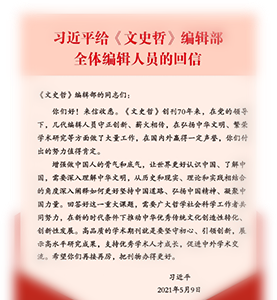摘要:“谶”与“纬”的思想观念,在两汉时期有一个由分立而化合的过程。古今学人往往笼统讲说汉代“谶纬”,并不符合实际。谶验观念始自远古,至汉末一直存续,从未间断。谶至汉初,伴随着经学兴起而发生了新变——以谶辅经、以谶释经。此一现象肇始于文帝时,至汉末一直存在。东汉明、章之后,以白虎观经学讨论会所形成的《白虎通》为标志,确立经、谶互释为正统思想。而其远源,实在汉初。考察谶、纬之发生演变史,实际上有谶而无纬。东汉后期出现的所谓“纬”,实际就是谶,其实质是以谶“纬”经。历来通行的“谶纬始自哀、平之际”的论断,不仅曲解了张衡,也淆乱了“谶”、“纬”的概念,更与西汉思想发展实际不符。
A Study of Prophecy and Apocrypha in the Western and Eastern Han Dynasties Zhang Fengyi
The ideas of “prophecy” and “apocrypha” experienced a process from separation to integration in the Western and Eastern Han Dynasties. Ancient and modern scholars tend to discuss “prophecy and apocrypha” of Han in general, which does not conform to reality. The idea of prophecy fulfillment originated from the ancient times, and had been lasted till the late Han without interruption. In the early Han Dynasty, there occured new change in prophecy with the rise of the studies of Confucian classics to assist and interprete the classics. This phenomenon started in the reign of Emperor Wendi, and existed till the late Han. After Emperor Mingdi and Emperor Zhangdi of the Eastern Han, mutual interpretation of Confucian classics and prophecy was established as the orthodox thought with the symbol of “Comprehensive Discussions in the White Tiger Pavallion,” which actually originated from the early Han. And the so-called “apocrypha” emerged in the late Eastern Han was just “prophecy.” The popular proposition that “prophecy and apocrypha began in the reigns of Emperor Aidi and Emperor Pingdi” does not only distort Zhang Heng’s exposition, but also confuse the concepts of prophecy and apocrypha; and moreover, it is not in accord with the ideological reality in the Western Han Dynasty.


